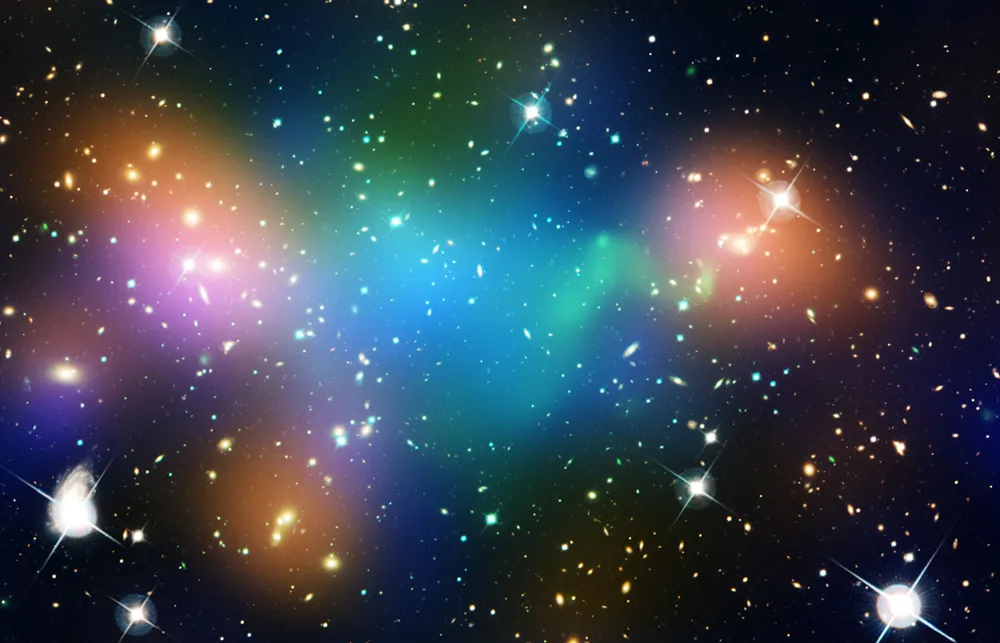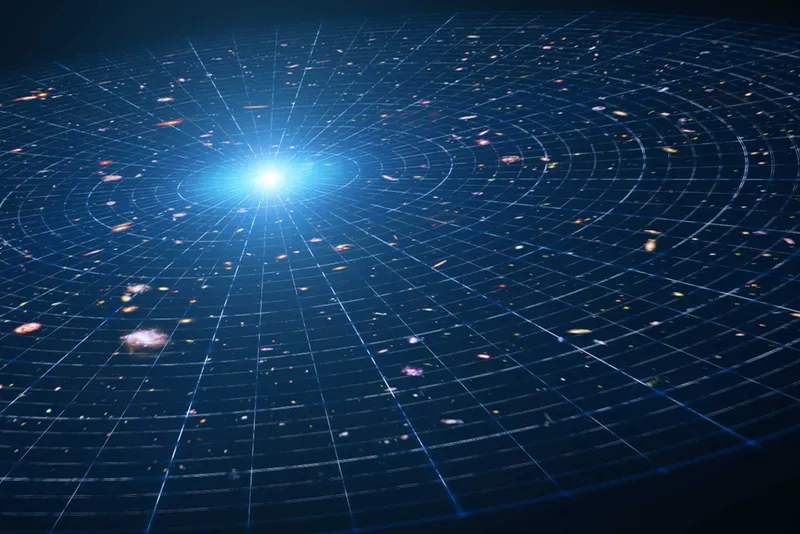We don't know what the vast, vast majority of the Universe is made of, as around 96% of it consists of dark energy (around 69%) and dark matter (around 26%), but what's the difference between the two?
All of the matter that we can actually directly observe - galaxies, stars, planets, mountains, trees, animals etc. - makes up just 5% of the Universe.
To put it mildly, it would help if we knew what dark matter and dark energy were!
But as of yet, scientists haven't been able to confirm the true nature of these mysterious phenomena.
However, there are key differences between dark matter and dark energy, and here we'll give you a quick overview, simply explained.
Dark matter

Dark matter cannot be directly observed, but astronomers infer dark matter’s existence from the behaviour of stars in galaxies, and galaxies in galaxy clusters, which appear to be orbiting under the influence of large amounts of unseen material.
In other words, galaxies don't rotate the way we should expect them to do, if all they consist of is the matter that we can see.
There must be some undetected matter within those galaxies causing them to behave the way they do.
This has become known as dark matter.
Dark matter gives out no light, or at least too little to be currently detectable.
The most likely explanation is that it is composed of some kind of undiscovered subatomic particle.
Another theory suggests that dark matter could be made up of very small black holes.
Most dark matter appears to be clumped in the region of visible galaxies.
Dark energy

The key difference between dark matter and dark energy is that dark energy is not matter at all.
Many of us learned in school the theory that the expansion of the Universe was slowing down, and that it would eventually stop and begin collapsing back in on itself.
However, in 1998 astronomers discovered that the expansion of the Universe isn't slowing down; it's speeding up.
And that's dark energy in a nutshell: it's is some kind of unseen force that's speeding up the expansion of the Universe.
Rather than clumping like dark matter, dark energy fills all space. It has repulsive gravity and is thought to be pushing galaxies apart and accelerating the expansion of the Universe.
Whereas dark matter is a mystery, dark energy is perhaps the biggest mystery in the Universe.
